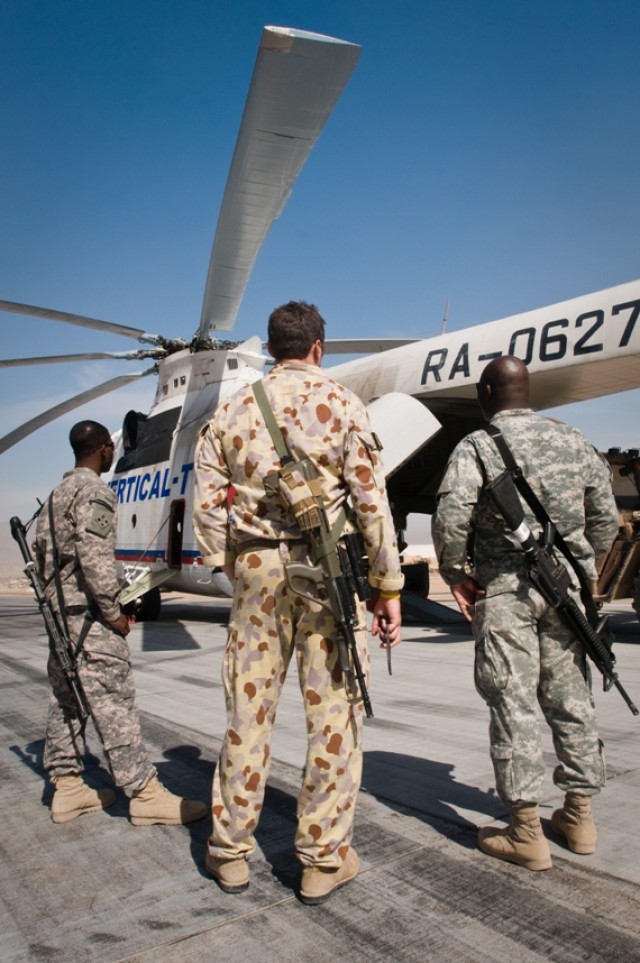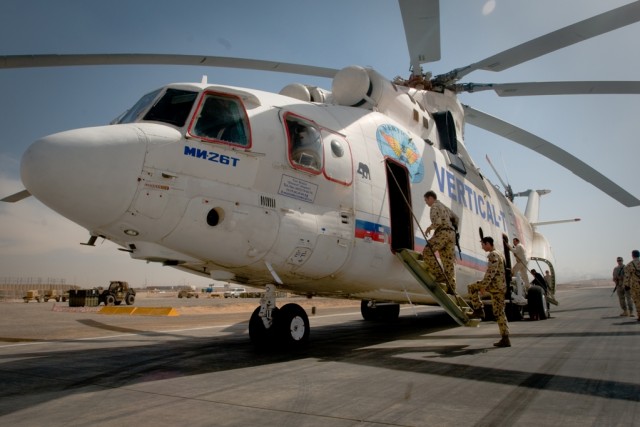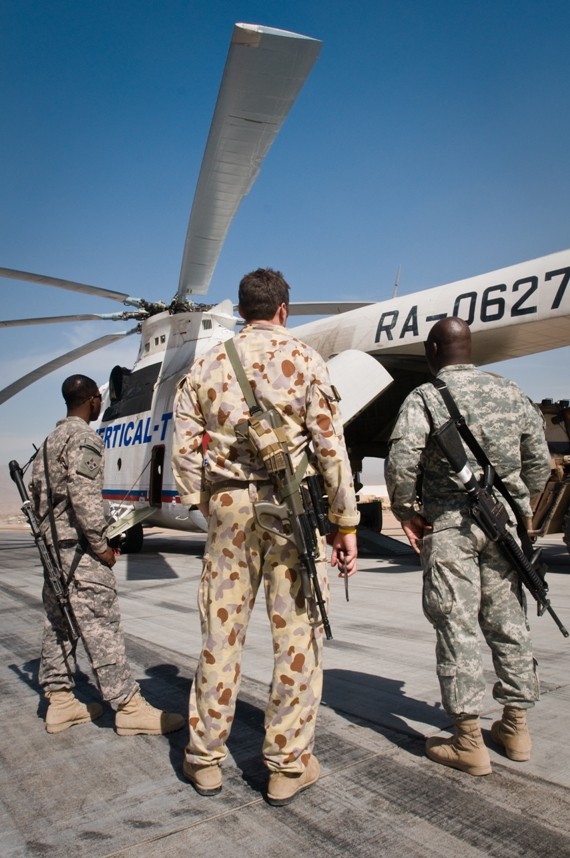TARIN KOT, Afghanistan - The Mil Mi-26 helicopter, also known as the Halo, is arguably one of the largest helicopters in existence.
This eight bladed helicopter, capable of carrying large up-armored vehicles or even other helicopters, is now the first air asset strictly controlled by Australia in the Middle East, said Australian Navy Lt. Cmdr. Andrew Willett, logistics planner at the Australian Joint Operations Command.
Willet said although the Australian Defence Force has helicopters in Afghanistan, they are primarily International Security Assistance Force assets. The final word on their use lies with ISAF, but the Mil Mi-26, which was contracted from Russia, answers only to Australia.
"This belongs to us," said Willet. "It belongs to our force support."
The Halo, which will be opperating in Uruzgan province, will still be used in support of the ISAF mission, but ADF now has easier access to much needed air support in the area, said Australian Army Maj. Paul Luck, supply officer for 2nd Mentoring Task Force, Combined Team Uruzgan.
Since many small patrol bases do not have runways for airplanes, the only way to get supplies to them by air is with a helicopter. With the Mil Mi-26, servicemembers can now transport nearly 100 troops or 20,000 kg. of goods directly to their destination.
The helicopter's first mission demonstrated just how much servicemembers in Afghanistan can benefit.
Luck said the mission was a simple two-hour movement of equipment from one base to another, but without the massive cargo capacity of the Mil Mi-26, it would have taken a large ground convoy more than two days to complete the task.
"It's heaps easier," said Luck. "Plus it keeps our soldiers' footprint off the ground."
Willet said one of the main reasons for contracting the helicopter is to reduce reliance on road transport.
"Any time we step outside the wire, there's an increased threat," said Willet. "[The Mil Mi-26] is not going to get rid of ground convoys altogether, but it'll reduce their frequency."
Australia's newest air asset will continue to run support missions throughout Uruzgan province - increasing safety, security and efficiency for Coalition Forces.








Social Sharing